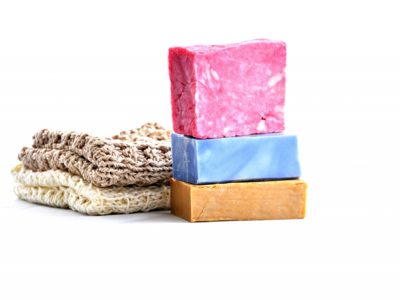Toxins in Your Your Personal Care Products, Are They Making You Sick?
Aging isn’t just the way we look, but more importantly, it’s the degenerative diseases which prematurely change our life.
- Breast Cancer
- Attention Deficit Disorder (ADD)
- Depression
- Obesity
- Birth Defects
- Heart Disease
- Hormone Disruption
- Memory Loss
Essential Oils Are Healthier Option
I have been using essential oils for a long time and am a huge fan of this essential oil startup kit. I am sure you have heard about them and their amazing benefits. I truly believe that every home should have and be using essential oils because they are a great non-toxic way to treat so many common ailments and issues.
List of The Worst Toxins Found In Personal Care Products
The following are the worst of the worst, toxic, carcinogenic ingredients, commonly found in most skin and personal care products. Each is directly linked to one or more of the above conditions.
DEA (Diethanolamine), MEA (Monoethanolamine), & TEA (Triethanolamine)
- This foam booster is a skin/eye irritant and causes contact dermatitis. Easily absorbed through skin to accumulate in body organs, even the brain. Repeated use resulted in major increases of liver and kidney cancer.
Dioxin
- Won’t appear on an ingredient list. Often contained in antibacterial ingredients such as triclosan, emulsifiers, PEGs and ethoxylated cleansers like Sodium Laureth Sulfate. Dioxin causes cancer, reduced immunity, nervous system disorders, miscarriages and birth deformity. It’s a hormone-disrupting chemical with toxic effects measured in the parts per trillion – one drop in 300 Olympic-size swimming pools! Our bodies have no defense against its damage. Most visible example was Yushchenko, the new Ukrainian President, who suffered from dioxin poisoning and looked old overnight.
DMDM Hydantoin & Urea (Imidazolidinyl)
- Just two of many preservatives that often release formaldehyde which may cause joint pain, cancer, skin reactions, allergies, depression, headaches, chest pains, ear infections, chronic fatigue, dizziness, and loss of sleep. Exposure may irritate the respiratory system, trigger heart palpitations or asthma, aggravate coughs and colds.
FD&C Color Pigments
- Synthetic colors from coal tar contain heavy metal salts that deposit toxins in skin, causing skin sensitivity/irritation. Absorption can cause depletion of oxygen and death. Animal studies show almost all are carcinogenic.
Fragrances
- Fragrances can indicate the presence of up to 4,000 separate ingredients including phthalates, many toxic or carcinogenic. Reported symptoms include headaches, dizziness, allergic rashes, skin discoloration, violent coughing/vomiting and skin irritation. Clinical observation proves fragrances can negatively affect the central nervous system.
Parabens
- Four types of parabens are used as preservatives and aren’t always labeled “parabens.” Parabens in deodorants and antiperspirants are linked to breast cancer and have recently been found in breast cancer tumors. Parabens, as xenoestrogens (hormone disruptors), may contribute to sterility in male mice and humans. Their estrogenic-like activity causes hormone imbalances in females and early puberty”.
PEG (Polyethylene glycol)
- Made by ethoxylating Propylene Glycol. Dangerous levels of dioxin have been found as a by-product of the ethoxylation process. PEGs are in everything including personal care, baby care and sunscreens.
Phthalates
- Xenoestrogens are commonly found in many products, usually not listed on labels. Health effects include damage to liver/kidneys, birth defects, decreased sperm counts and early breast development in girls and boys.
Propylene Glycol (PG) and Butylene Glycol
- Petroleum plastics act as surfactants (wetting agents, solvents). The EPA considers PG so toxic it requires protective gloves, clothing, goggles and disposing of PG solutions by burying them. Because PG penetrates skin so quickly, EPA warns against skin contact to prevent consequences such as brain, liver, and kidney abnormalities. There isn’t a warning label on products where concentration is greater than in most industrial applications.
Sodium Lauryl Sulfate (SLS) and Sodium Laureth Sulfate (SLES)
- Detergents and surfactants that pose serious health threats. Used in car washes, garage floor cleaners, engine degreasers and 90% of personal-care products that foam. Animals exposed to SLS experienced eye damage, depression, labored breathing, diarrhea, severe skin irritation, and even death. SLS may also damage skin’s immune system by causing layers to separate, inflame and age.
Triclosan
- Synthetic “antibacterial” ingredient with chemical structure similar to Agent Orange! EPA registers it as a pesticide, posing risks to human health and environment. Classified as a chlorophenol, chemicals suspected of causing cancer in humans. Its manufacturing process often produces dioxin – see above. Tufts University School of Medicine says triclosan is capable of forcing emergence of ‘super bugs’ it cannot kill. Widespread use may have nightmare implications for our future.
- As the number of antibacterial products grows, so does the presence of antibacterial chemical triclosan–along with fears from many scientists that this spread is contributing to antibiotic resistance, and a rise in “superbugs.”
- On March 30, 2012, Health Canada and Environment Canada published a preliminary assessment of triclosan, officially commencing a 60 day comment period. In light of this comment period, Environmental Defence recommends a mandatory ban on triclosan in household products to protect the health of Canadians and the environment.
For more information for consumers about where to find triclosan and how to avoid it, check out this triclosan guide.








 Binge Eating – Are You Going To Eat That Cookie Or Should I?
Binge Eating – Are You Going To Eat That Cookie Or Should I?
Leave a Reply